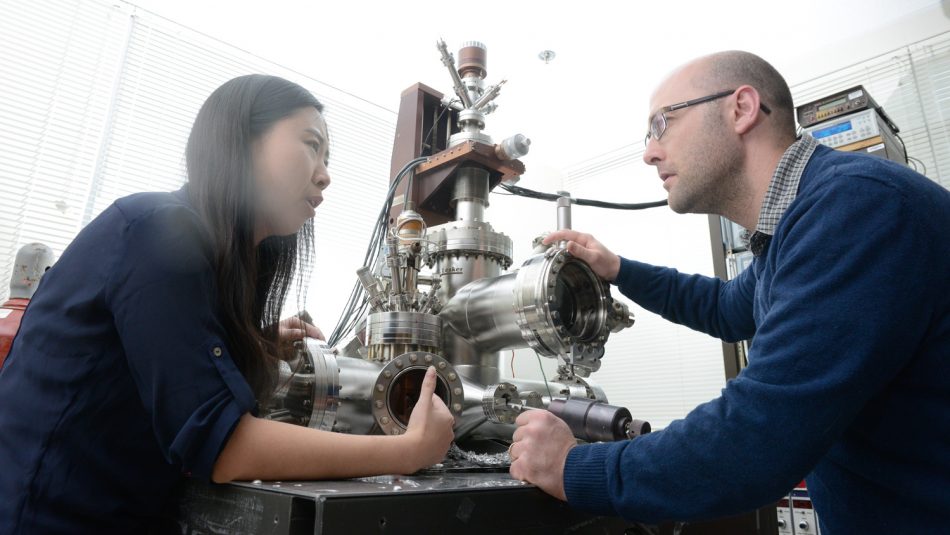Carbon Electronics Aram Amassian
Professor, Materials Science and Engineering
Aram Amassian joined NC State in August 2018 as a Chancellor’s Faculty Excellence Program cluster hire in Carbon Electronics and a professor in the Department of Materials Science and Engineering. Amassian’s research is highly interdisciplinary and focuses on ink-based formulations and thin film processing of organic and hybrid organic-inorganic semiconducting materials for electronic, optoelectronic and energy applications. Amassian is internationally renowned for his work on solution-processing of organic, colloidal quantum dot and hybrid perovskites, where he has introduced in situ diagnostics tools to understand the complex solidification process of organic and hybrid inorganic-organic inks into functional electronic, optoelectronic and energy materials and devices, and to enable novel additive manufacturing using robotics and artificial intelligence. His long-term goal is to enable mass adoption of sustainable technologies to mitigate and combat climate change through education, research, workforce development and entrepreneurship.
Amassian was previously a founding member of the faculty at the King Abdullah University of Science and Technology (KAUST) in Saudi Arabia. He served as assistant and associate professor in materials science and engineering and was a founding member of the KAUST Solar Center. He has worked extensively with industry, including SABIC, one of the world’s largest petrochemical manufacturers, Boeing, and Sony. He was named the Career Development SABIC Chair for his work on solution-processed optoelectronic materials.
Amassian received his bachelor of engineering and Ph.D. in engineering physics at Ecole Polytechnique de Montreal in Canada. He was a postdoctoral associate in the Department of Materials Science and Engineering at Cornell University and at the Cornell High Energy Synchrotron Source. He was awarded the National Sciences and Engineering Research Council (NSERC) (Canada) postdoctoral fellowship, the NSERC post-graduate fellowship, as well as the American Vacuum Society’s Electronic Materials postdoctoral award. He is widely published and his work has appeared in peer-reviewed journals, including Nature, Nature Materials, Nature Nanotechnology, Science Advances, Advanced Materials, Energy and Environmental Science, ACS Energy Letters and Joule. He was named a Highly Cited Researcher (Web of Science) in both 2020 and 2021, and was admitted as a member of the Royal Society of Chemistry in 2021. Most recently, he was elected Fellow of the Optical Society of America (Optica).

